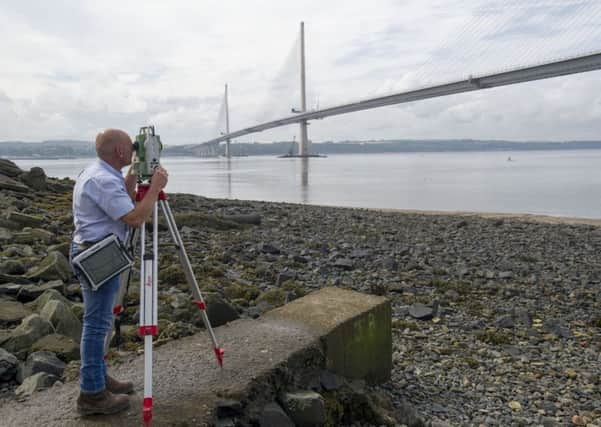The hidden features of the Queensferry Crossing


They include a monorail shuttle under the carriageways which will speed engineers across the bridge to fix any problems. The shuttle, running the entire 1.7 mile length of the structure, will also transport materials and small equipment.
Still under construction, it will be housed in the enclosed “box” below the steel deck and be the largest of its kind in Britain.
Advertisement
Hide AdAdvertisement
Hide AdThe shuttle will be protected from the wind and rain, a far cry from Forth Road Bridge staff who have to battle the elements to reach areas of the structure which need repairs.
Also being installed is a maintenance “cradle”, suspended from the underside of the deck on another monorail, for inspections, painting and other repairs.
On the older bridge, these have had to be specially rigged up in lengthy operations.
Dehumidification – pumping in dry air to prevent cable and other corrosion – has been built into the new crossing.
A similar system has had to be retrofitted on the Forth Road Bridge to slow the damage at the core of its problems.
Queensferry Crossing officials said they have learned the lessons from the way the older bridge was built.
“Maintenance was not top of the list when the Forth Road Bridge was constructed,” said technical director Mike Glover. “At that time, people had a great faith in materials – it was a case of ‘If it isn’t bust, don’t fix it’. We have learned a lot from the experience.”
On the Forth Road Bridge, engineers have discovered to their cost the inadequacies of its design, with some repairs causing major disruption.
Advertisement
Hide AdAdvertisement
Hide AdOther work – such as replacing the carriageways’ expansion joints – would have been so problematic they have been postponed until the new bridge opens.
Mr Glover said: “The Queensferry Crossing has been designed with maintenance in mind from the outset, and not something to be added in – we know there will be a requirement to replace things.”
These include the hundreds of cables which support the deck, which can be individually removed. At the south end of the bridge, space has been created for an emergency control room if needed.
Some 1,500 sensors will monitor the structure to record how the bridge is coping with traffic loads.
While pedestrians and cyclists will be barred from the bridge because it is to become a motorway, there are walkways along the middle of the approach viaducts, and a central reservation for bridge vehicles between the towers.
Other features to keep traffic moving are built into the project. These form part of the upgrading of nearly 14 miles of motorway on either side of the bridge – from an improved M9 junction to peak-hour buses running on the hard shoulder.
Scotland’s first mandatory variable speed limits are already in use to minimise congestion when the road is busiest, or during disruption.
This is being supplemented by traffic lights on slip roads at either end of the bridge automatically adjusting their sequences to maintain the best traffic flow, including holding back vehicles when the bridge is congested. Traffic volumes are detected by sensors in road surfaces.
Advertisement
Hide AdAdvertisement
Hide AdA spokeswoman for the Scottish Government’s Transport Scotland agency, said: “This will form part of the overall strategy to optimise traffic flows at peak times in conjunction with the variable mandatory speed limits along the entire 13.7 mile corridor.”